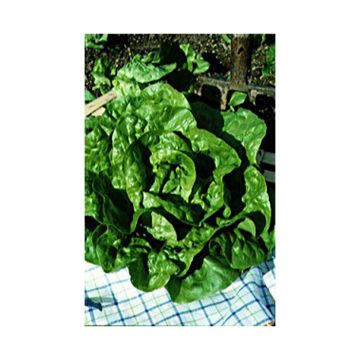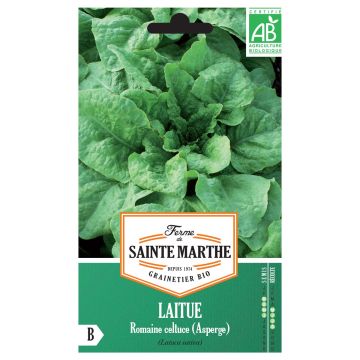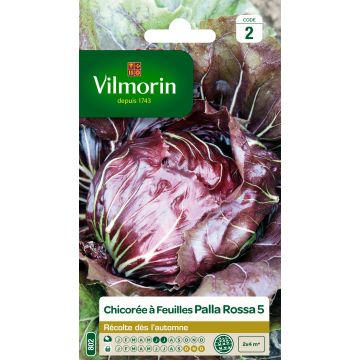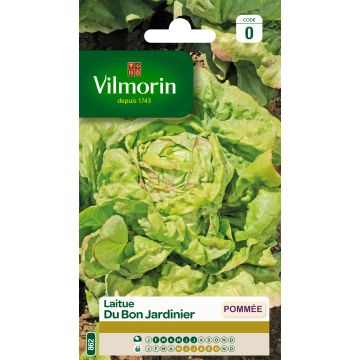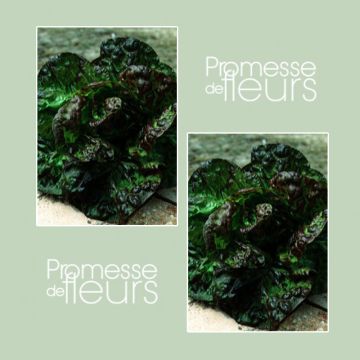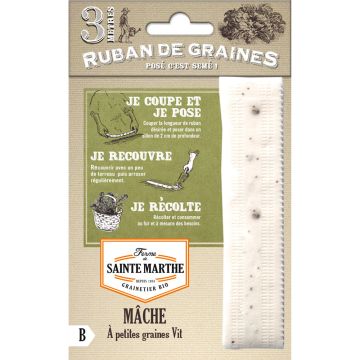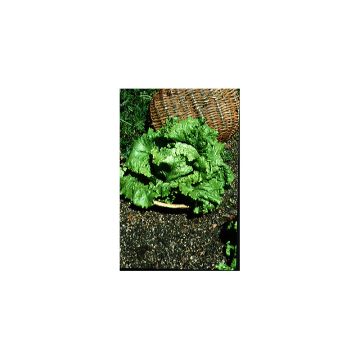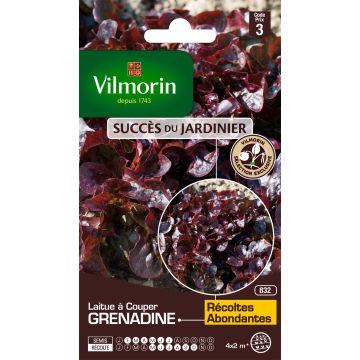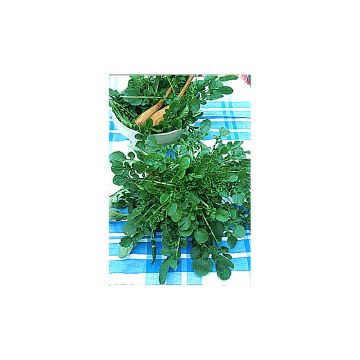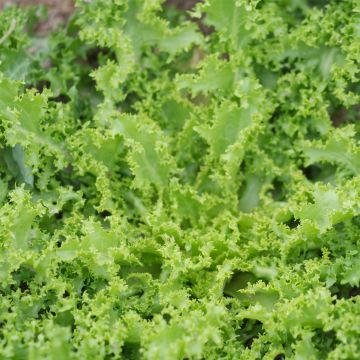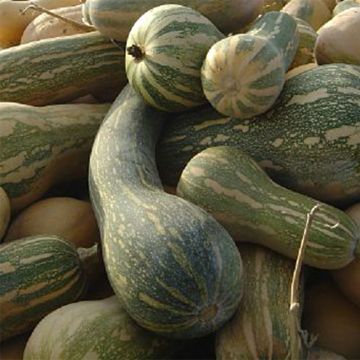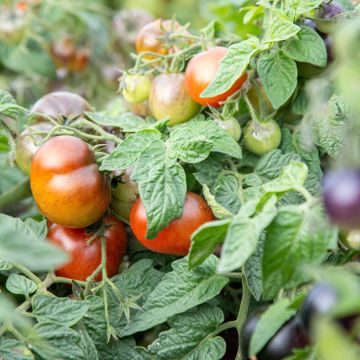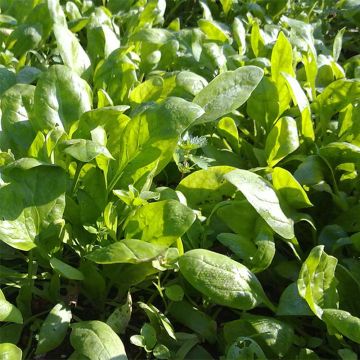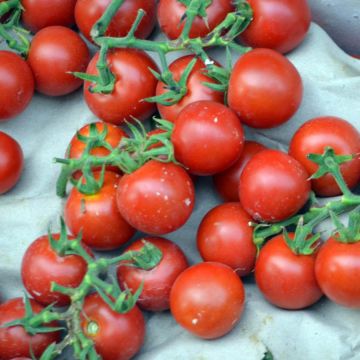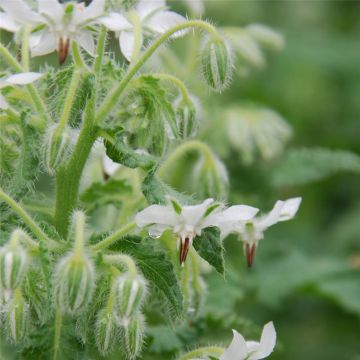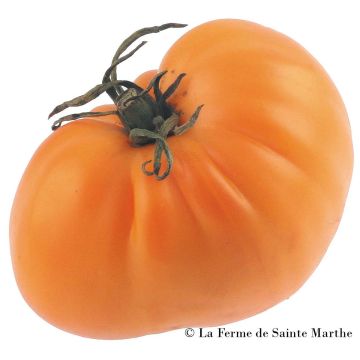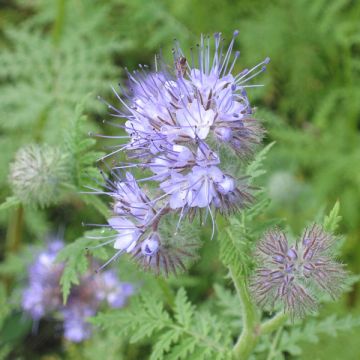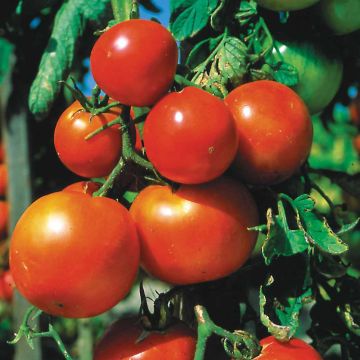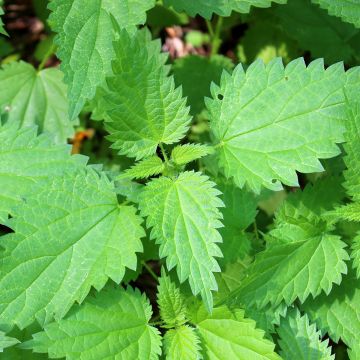

Curly endive Wallonne organic seeds - Cichorium endivia var. crispum
Curly endive Wallonne organic seeds - Cichorium endivia var. crispum
Cichorium endivia var. crispum Wallonne
Curly endive
This item cannot be shipped to the selected country
Delivery charge from €5.90
More information
Schedule delivery date,
and select date in basket
This plant carries a 6 months recovery warranty
More information
We guarantee the quality of our plants for a full growing cycle, and will replace at our expense any plant that fails to recover under normal climatic and planting conditions.
From €5.90 for pickup delivery and €6.90 for home delivery
Express home delivery from €8.90.
Description
The 'Wallone' Curly Endive is offered here in the form of AB certified seeds. Known for its resistance to autumn weather, it is an excellent variety for late crops and cool climates. Its curly and crunchy leaves form a tight rosette of 40 cm in diameter, with a well-filled white heart. It can be consumed raw in salads or cooked like spinach. Sow from August to September for a harvest 3 months later.
Curly endive (Cichorium endivia var. crispum) is a biennial vegetable plant of the Asteraceae family, appreciated for its crunchiness and slightly bitter flavour. It is also called endive, although it does not resemble the common white endive. Derived from wild chicory (Cichorium intybus), which is found naturally in meadows and along roadsides, curly endive has been selected for its taste qualities and decorative aspect.
The 'Wallone' variety is named after Wallonia, a Belgian region where it was developed for its robust characteristics and its ability to produce curly and crunchy leaves, even in cool conditions. It forms a beautiful rosette of finely cut green leaves, with a naturally whitening heart, reducing its bitterness. This particularity distinguishes it from some varieties requiring artificial blanching through light deprivation.
Relatively hardy curly endive tolerates cool temperatures well but is more sensitive to frost than wild chicory. In cold regions, it is advisable to use a protective cover or tunnel to extend the harvest period. It thrives in well-drained, moderately rich soils kept moist, benefiting from moderate watering and careful maintenance.
In cooking, its leaves are mainly consumed raw in salads, but they are also suitable for hot preparations such as gratins, braised dishes, or cream recipes. Health-wise, all chicories are known for their tonic, purifying, and slightly laxative properties, making them a tasty and beneficial vegetable.
Harvest gradually, according to needs, by cutting the outer leaves to allow the rosette to continue growing. For better conservation, curly endives can be kept cool for a few days after harvesting. Regular maintenance, including hoeing, weeding, and mulching in case of drought will ensure a generous and quality production.
Report an error about the product description
Harvest
Plant habit
Foliage
Botanical data
Cichorium
endivia var. crispum
Wallonne
Asteraceae
Curly endive
Cultivar or hybrid
Biennial
Other Salad leaf seeds
Planting and care
Sowing 'Wallonne' Curly Endive
Sow from August to September
Sow seeds in a flat furrow 5 cm wide and 2 cm deep. It is advisable to sow sparsely and cover the seeds with a little fine soil (half a centimetre). Then lightly press down with the back of a rake. Germination takes about 8 days. Rows should be spaced 30 cm apart.
Thin plants to one every 30 cm along the row, they can also be transplanted elsewhere in the vegetable garden when they have 7 or 8 leaves.
Maintenance:
To prevent diseases that attack endives such as powdery mildew or rust, it is important to regularly hoe and weed and to practice a good crop rotation every 3 to 4 years.
Watering should be generous and frequent. Soil coverage (mulching) is beneficial. Curly endives are less frost-resistant than wild endives, so it is best to protect them with a fleece or tunnel during winter.
Seedlings
Care
Intended location
This item has not been reviewed yet - be the first to leave a review about it.
Vegetable seeds
Haven't found what you were looking for?
Hardiness is the lowest winter temperature a plant can endure without suffering serious damage or even dying. However, hardiness is affected by location (a sheltered area, such as a patio), protection (winter cover) and soil type (hardiness is improved by well-drained soil).

Photo Sharing Terms & Conditions
In order to encourage gardeners to interact and share their experiences, Promesse de fleurs offers various media enabling content to be uploaded onto its Site - in particular via the ‘Photo sharing’ module.
The User agrees to refrain from:
- Posting any content that is illegal, prejudicial, insulting, racist, inciteful to hatred, revisionist, contrary to public decency, that infringes on privacy or on the privacy rights of third parties, in particular the publicity rights of persons and goods, intellectual property rights, or the right to privacy.
- Submitting content on behalf of a third party;
- Impersonate the identity of a third party and/or publish any personal information about a third party;
In general, the User undertakes to refrain from any unethical behaviour.
All Content (in particular text, comments, files, images, photos, videos, creative works, etc.), which may be subject to property or intellectual property rights, image or other private rights, shall remain the property of the User, subject to the limited rights granted by the terms of the licence granted by Promesse de fleurs as stated below. Users are at liberty to publish or not to publish such Content on the Site, notably via the ‘Photo Sharing’ facility, and accept that this Content shall be made public and freely accessible, notably on the Internet.
Users further acknowledge, undertake to have ,and guarantee that they hold all necessary rights and permissions to publish such material on the Site, in particular with regard to the legislation in force pertaining to any privacy, property, intellectual property, image, or contractual rights, or rights of any other nature. By publishing such Content on the Site, Users acknowledge accepting full liability as publishers of the Content within the meaning of the law, and grant Promesse de fleurs, free of charge, an inclusive, worldwide licence for the said Content for the entire duration of its publication, including all reproduction, representation, up/downloading, displaying, performing, transmission, and storage rights.
Users also grant permission for their name to be linked to the Content and accept that this link may not always be made available.
By engaging in posting material, Users consent to their Content becoming automatically accessible on the Internet, in particular on other sites and/or blogs and/or web pages of the Promesse de fleurs site, including in particular social pages and the Promesse de fleurs catalogue.
Users may secure the removal of entrusted content free of charge by issuing a simple request via our contact form.
The flowering period indicated on our website applies to countries and regions located in USDA zone 8 (France, the United Kingdom, Ireland, the Netherlands, etc.)
It will vary according to where you live:
- In zones 9 to 10 (Italy, Spain, Greece, etc.), flowering will occur about 2 to 4 weeks earlier.
- In zones 6 to 7 (Germany, Poland, Slovenia, and lower mountainous regions), flowering will be delayed by 2 to 3 weeks.
- In zone 5 (Central Europe, Scandinavia), blooming will be delayed by 3 to 5 weeks.
In temperate climates, pruning of spring-flowering shrubs (forsythia, spireas, etc.) should be done just after flowering.
Pruning of summer-flowering shrubs (Indian Lilac, Perovskia, etc.) can be done in winter or spring.
In cold regions as well as with frost-sensitive plants, avoid pruning too early when severe frosts may still occur.
The planting period indicated on our website applies to countries and regions located in USDA zone 8 (France, United Kingdom, Ireland, Netherlands).
It will vary according to where you live:
- In Mediterranean zones (Marseille, Madrid, Milan, etc.), autumn and winter are the best planting periods.
- In continental zones (Strasbourg, Munich, Vienna, etc.), delay planting by 2 to 3 weeks in spring and bring it forward by 2 to 4 weeks in autumn.
- In mountainous regions (the Alps, Pyrenees, Carpathians, etc.), it is best to plant in late spring (May-June) or late summer (August-September).
The harvesting period indicated on our website applies to countries and regions in USDA zone 8 (France, England, Ireland, the Netherlands).
In colder areas (Scandinavia, Poland, Austria...) fruit and vegetable harvests are likely to be delayed by 3-4 weeks.
In warmer areas (Italy, Spain, Greece, etc.), harvesting will probably take place earlier, depending on weather conditions.
The sowing periods indicated on our website apply to countries and regions within USDA Zone 8 (France, UK, Ireland, Netherlands).
In colder areas (Scandinavia, Poland, Austria...), delay any outdoor sowing by 3-4 weeks, or sow under glass.
In warmer climes (Italy, Spain, Greece, etc.), bring outdoor sowing forward by a few weeks.

































